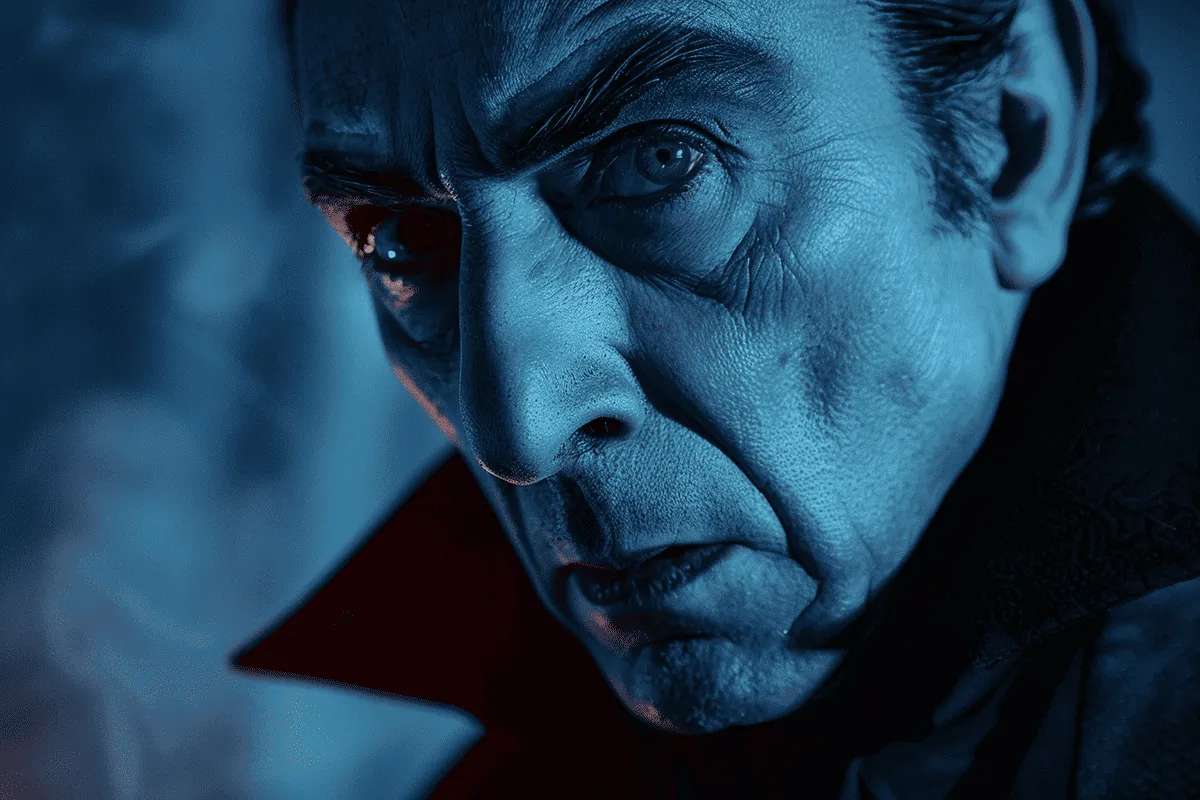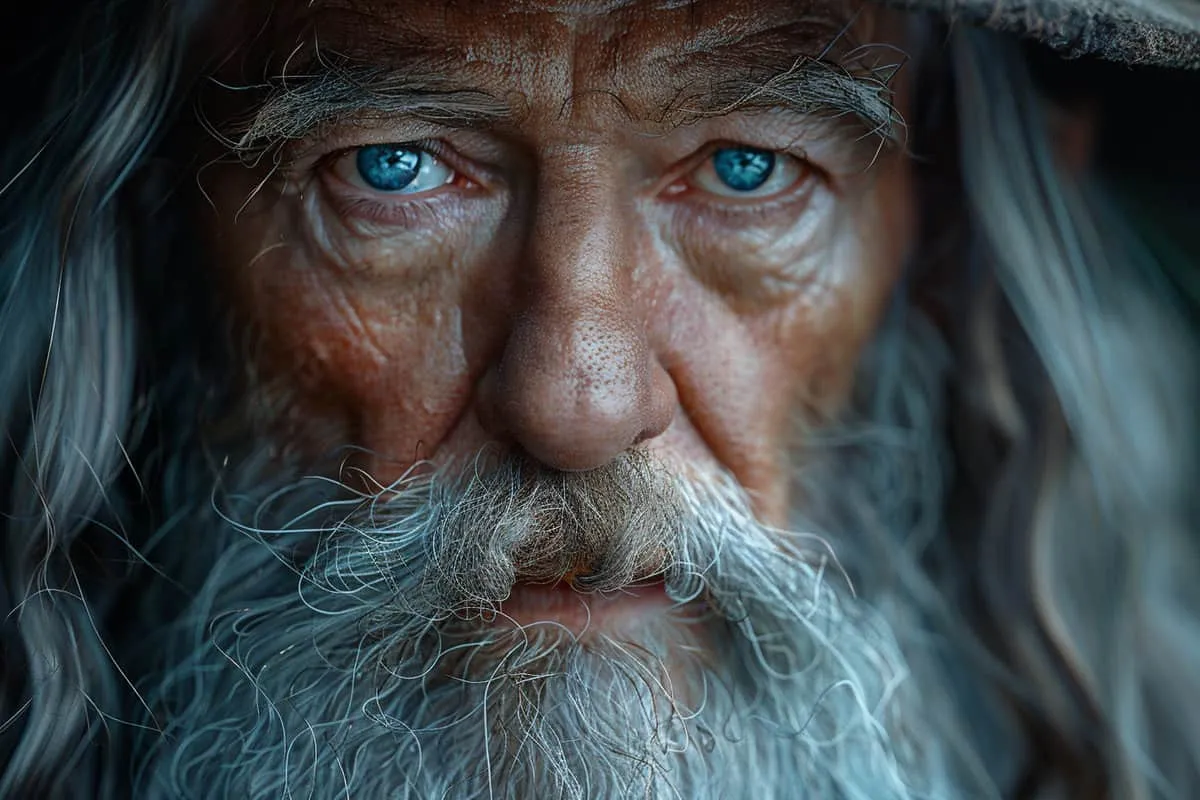10 Dracula Facts Unearthed (Secrets of the Iconic Vampire)
Dive into the shadowy world of one of fiction’s most fascinating characters with these astonishing Dracula facts.
From Bram Stoker’s iconic novel to the countless adaptations it has inspired, Dracula has become a household name, symbolizing the allure and fear of the vampire mythos.
But there’s more to this legendary figure than fangs and capes.
Explore hidden histories, surprising trivia, and how Dracula continues to influence our culture today.
Whether you’re a die-hard fan or just curious about the Count, these tidbits will sink their teeth into your imagination.
Scroll down for a bite-sized exploration of our top picks.
1. Dracula Was Inspired by Vlad the Impaler
Vlad III, a real historical figure, earned his terrifying reputation through his favorite method of punishing enemies: impalement.
This gruesome tactic wasn’t just for show; it was a clear message to anyone who dared cross him.
He ruled Wallachia, now part of modern-day Romania, in the 15th century. His rule was marked by fierce battles against the Ottoman Empire and internal strife within Wallachia itself.
Despite these challenges, Vlad III managed to maintain power through sheer force and strategic alliances.
Interestingly, he was known as Vlad Drăculea. “Drăculea” translates to “son of the dragon” or “son of the devil,” which hints at how people viewed him even during his lifetime.
It’s this nickname that inspired Bram Stoker’s iconic character Count Dracula over four centuries later.
The connection between Vlad III and the vampire genre might not be direct since he didn’t drink blood or fear sunlight. However, his cruel methods and fearsome name laid an intriguing foundation for what would become one of literature’s most famous characters.
2. Bram Stoker Never Visited Transylvania
Bram Stoker, the author behind the iconic character Dracula, never actually visited Transylvania.
This fact surprises many since Transylvania’s eerie castles and fog-laden landscapes are central to the novel’s atmosphere.
Instead of firsthand experience, Stoker relied heavily on research and his vivid imagination to bring Dracula’s castle and its surroundings to life.
He poured over books and documents that described Eastern Europe’s geography, folklore, and customs.
Through this meticulous research process, Stoker was able to construct a believable world for his characters without ever stepping foot in it himself.
The creation of Dracula’s castle is a testament to Stoker’s imaginative prowess.
He crafted an imposing fortress filled with hidden passages, ancient chambers, and an air of mystery—all from his mind.
This has led readers across generations to feel as though they’re wandering through the dimly lit corridors alongside Jonathan Harker.
Despite never visiting Eastern Europe, Stoker managed to capture the essence of Transylvania so well that today many associate it directly with vampires—specifically with Dracula.
His work has had such an impact that there are tours in Romania now tracing what fans imagine could have been Jonathan Harker’s journey or pointing out sites that might have inspired parts of Castle Dracula.

3. The Original Name Wasn’t Dracula
Did you know that the terrifying tale of Count Dracula was almost known by a different name? That’s right. Before Bram Stoker introduced the world to his iconic character, he had another title in mind for his novel.
Initially, Stoker titled his work “The Un-Dead.” This name pointed to the central theme of vampirism and immortality that runs through the story. However, as publication neared, a change was made.
Why the switch? Well, Stoker decided on “Dracula” for its dramatic effect.
The name Dracula wasn’t just chosen at random either; it carries weight and mystery, perfectly fitting for the lord of vampires. Plus, it ties directly to Vlad III or Vlad Tepes (Vlad the Impaler), who is often thought to be an inspiration for Stoker’s character due to his fierce reputation.
Interestingly enough, this last-minute change has significantly impacted how we view vampires today. Imagine if Harker had faced off against “The Un-Dead” instead – doesn’t quite have the same ring to it!
4. Dracula Means “Son of the Dragon”
The name Dracula carries a weighty legacy, deeply rooted in history and symbolism.
It’s derived from Vlad the Impaler’s father, who bore the title Dracul. This wasn’t just any title; it was a badge of honor that signified his membership in the prestigious Order of the Dragon.
This order wasn’t about dragons as we think of them today – no fire-breathing beasts here. Instead, it symbolized power, protection, and mystery. Members were sworn to defend Christianity against its enemies, making them revered figures.
Vlad III inherited more than just a name from his father; he took on these characteristics too. His nickname “the Impaler” might hint at darker deeds, but at its heart is an echo of that dragon spirit – fierce and formidable.
So when we talk about Dracula today, whether it’s Bram Stoker’s fictional character or the real historical figure Vlad III, remember: this name isn’t just about instilling fear or creating an iconic soul-sucking vampire.
It speaks to a legacy of power and protection wrapped up in mystique.

5. The Novel Was Almost Lost to a Copyright Battle
After Bram Stoker passed away, his widow found herself in the middle of a fierce fight.
She wasn’t just mourning her husband; she was battling to protect his work from being copied without permission. Unauthorized adaptations of the novel started popping up, and she stood up against them.
These copyright disputes weren’t small skirmishes; they threatened the very survival of “Dracula” as we know it.
Imagine a world where this iconic book faded into obscurity because people kept stealing Stoker’s story! Thankfully, that’s not our reality.
The battles were tough and took years, but eventually, “Dracula” entered public domain status.
This change meant that no one owned exclusive rights to the novel anymore. It sounds like a loss, but it was actually its salvation.
Entering public domain ensured that “Dracula” would live on forever. Now authors can write stories inspired by Stoker’s work without fear of legal action. Schools can teach it without paying hefty fees for usage rights.
6. Dracula Has Never Been Out of Print
Since its first appearance in 1897, “Dracula” has been a constant on bookshelves around the world. This Gothic horror novel by Bram Stoker introduces Count Dracula and has never stopped thrilling readers.
What makes it so special? For starters, it’s been translated into over 50 languages.
Imagine people from different corners of the globe, speaking in tongues ranging from Spanish to Japanese, all sharing the chills and thrills that “Dracula” brings. That’s a lot of shared scares!
This fact alone speaks volumes about its enduring popularity.
Year after year, new generations pick up this book and get lost in its pages.
It’s not just a story; it’s an experience that transcends time.
Why does “Dracula” keep captivating us? Perhaps it taps into our deep-seated fears or maybe it’s just incredibly well-written.
Whatever the reason, one thing is clear: “Dracula” is more than just a novel; it’s become a cultural touchstone for both men and women who love a good scare.

7. Count Dracula Wasn’t the First Vampire in Literature
Before Bram Stoker introduced the world to his iconic character, vampire tales had already been capturing imaginations.
One notable example is John Polidori’s “The Vampyre,” published in 1819. This work marks a significant moment in literature as it brought the concept of vampires into the public eye.
The 19th century saw an explosion of interest in these creatures of the night.
Society’s fascination with death and the supernatural provided fertile ground for stories about vampires. This period produced a wealth of gothic literature that explored themes of immortality, horror, and seduction.
While Stoker did not invent vampire lore, he certainly played a pivotal role in shaping its future.
“Dracula,” released in 1897, took elements from earlier works but added depth and complexity to the vampire mythos.
Stoker’s novel wasn’t just about fear; it delved into issues of sexuality, technology versus superstition, and colonialism.
Count Dracula has become synonymous with vampirism itself thanks to Stoker’s rich storytelling and intricate character development. However, acknowledging those who paved the way for such stories is essential for understanding how cultural phenomena evolve.
8. Dracula’s Castle, Bran Castle, Is a Major Tourist Attraction
Bran Castle, often linked to the famous Dracula legend from Bram Stoker’s novel, stands as a striking example of gothic architecture in Romania.
While many believe this castle was the inspiration for Dracula’s home, there’s no concrete evidence that Stoker had Bran Castle in mind. Despite this uncertainty, the castle still draws crowds eager to explore its connection to one of literature’s most notorious characters.
Visitors come from far and wide to wander through its historic rooms and enjoy the breathtaking view of the surrounding area.
The allure isn’t just about vampires or spooky tales; it’s also about stepping into a place that feels like it has stepped out of time. Gothic arches and ancient stone give everyone who walks through its doors a taste of history.
Interestingly, despite its association with dark legends, Bran Castle is more than just a “vampire” spot.
It serves as an important cultural landmark where people can learn about Romanian history and admire medieval architecture at its finest.

9. The First Film Adaptation Didn’t Have Permission from Stoker’s Heirs
In the early 1920s, “Nosferatu” emerged as a groundbreaking silent film. However, it was mired in controversy right from its inception.
This adaptation of Bram Stoker’s “Dracula” did not have the blessing or permission of Stoker’s heirs. They were taken aback by how their intellectual property was used without consent.
The legal battles that ensued were intense. The court ruled in favor of Stoker’s heirs, leading to a drastic decision: nearly all copies of “Nosferatu” were ordered to be destroyed.
Imagine the ability it took for this film to escape complete obliteration!
Despite these efforts to erase it from history, “Nosferatu” survived against all odds.
It slipped through the cracks and found its way into various archives and private collections around the world.
Today, “Nosferatu” is celebrated as a classic example of early cinema and horror filmmaking.
Its eerie atmosphere and innovative use of shadows have inspired countless filmmakers and remain influential over a century later.
10. Garlic and Crucifixes: Folklore vs. Stoker’s Creation
Garlic has long been a staple in folklore for its power to keep evil at bay.
Imagine it as an ancient form of security system against the unseen bad guys lurking in the shadows. It wasn’t just about adding flavor to food; it was about protection.
In Bram Stoker’s world, crucifixes take on a mighty role too.
They’re not just symbols of faith but are powerful tools that literally shine light into darkness, pushing away vampires with their holy might. Think of them as superhero gadgets that work wonders against creatures of the night.
Stoker didn’t just pull these ideas out of thin air; he dipped into the rich well of existing myths and sprinkled his own creative magic on top for dramatic effect.
He knew what would send shivers down readers’ spines while keeping them hooked, blending reality with fiction seamlessly.
- Garlic: Not just for cooking but a legendary shield against evil.
- Crucifixes: More than religious symbols, they’re vampire kryptonite in Stoker’s novel.
Frequently Asked Questions
Was Dracula a real person?
Yes and no. Dracula was inspired by Vlad the Impaler, a 15th-century prince known for his brutal methods, but the character in Bram Stoker’s novel is fictional.
Did Bram Stoker visit Transylvania to research for Dracula?
Nope, he never did. All of Stoker’s knowledge about Transylvania came from books and stories; he never set foot there himself.
What was Dracula’s original name in the manuscript?
Dracula wasn’t always Dracula. Initially, Stoker named him “Count Wampyr,” but changed it during writing.
What does the name “Dracula” mean?
It means “Son of the Dragon.” The name links back to Vlad the Impaler’s father, who belonged to the Order of the Dragon.
How come we still have Dracula copies today if there was a copyright battle over it?
The novel almost got lost forever due to a copyright fight. Luckily for us horror fans, it survived and has remained in print ever since.
Is Count Dracula the first vampire in literature?
No, vampires were lurking around in literature before Count Drac made his grand entrance. He just happens to be one of the most famous ones now.
Can I visit Count Dracula’s castle?
Absolutely! Bran Castle in Romania is considered “Dracula’s Castle.” It attracts tourists from all over looking for a taste of Gothic lore.







